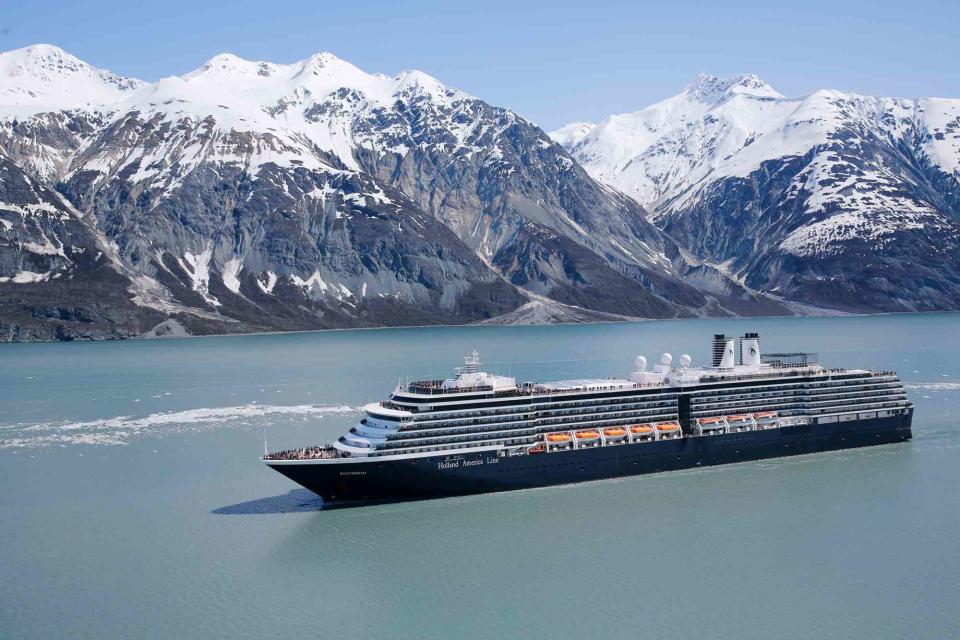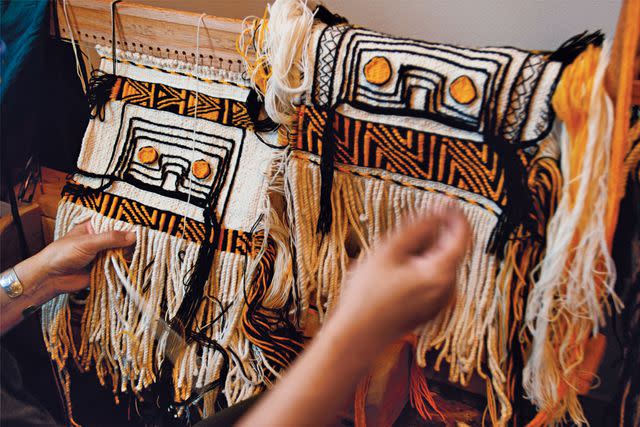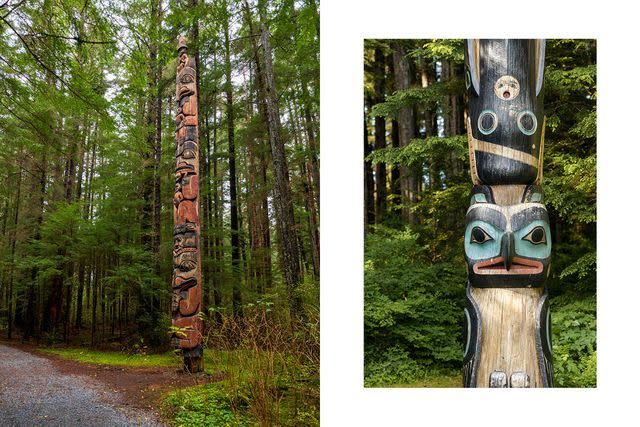I've Taken More Than 20 Alaska Cruises, but I've Never Been More Impressed by My Most Recent Trip — Here's Why
As Alaska works to bring its Indigenous cultures to the fore, cruise passengers can expect more engaging experiences, on land and at sea.

Courtesy of Holland America Line
The Holland America Line Westerdam in Alaska’s Glacier Bay National Park & Preserve.I was having a fangirl moment at Saxman Native Village. Master artist Nathan Jackson had put down his chisel and was taking a break from carving a totem pole to chat with me and my husband. Jackson, a member of the Chilkoot-Tlingit tribe, has been carving for more than 60 years, and today his red cedar creations are exhibited in museums around the world. Yet there we were, just outside the city of Ketchikan, getting a private audience with the man himself.

Courtesy of Holland America Line
Chilkat weaving in Klawock, Alaska, an up-and-coming cruise port.Every year, millions of people go to Alaska for the chance to watch a startlingly blue glacier shed a house-size chunk of ice, or to witness pods of humpback whales breaching. But getting to know the state through descendants of its original inhabitants has, historically, been more difficult.
I’ve taken more than 20 cruises through southeastern Alaska, navigating often thronged ports to suss out interesting adventures, such as snorkeling in the chilly Pacific or learning to make salmon chowder. I was still surprised, given how popular Alaska cruises are these days, to have an intimate chat with somebody like Jackson on a cruise excursion — particularly one from our ship, the Holland America Line Westerdam, which can accommodate nearly 2,000 guests.

Courtesy of Travel Alaska
From left: The Mosquito Legend pole at Sitka National Historical Park; details of a totem pole in Sitka National Historical Park.But momentum is building around Alaska Native tourism. One big step came this year, when information about the state’s 229 tribes and 20 distinctive cultures appeared in a special section of Alaska’s official tourism brochure for the first time.
Another marker of progress is the inclusion of a permanent seat for an Indigenous person on the board of the Alaska Travel Industry Association, a nonprofit. Both efforts were led by Camille Ferguson, an Indigenous tourism expert and economic development director for the Sitka Tribe of Alaska.

Courtesy of Huna Totem Corporation
A brown bear seen near Icy Strait Point, a Native-owned port.“I’m the one that stirred up the pot,” said Ferguson, who is Tlingit, when we met over lunch in the town of Sitka, a popular port for cruise ships. “The state did not have a connection to make sure they were doing it right, which is very essential when you are talking about cultural tourism.”
Alongside her community, Ferguson has worked to “enhance the narrative,” she explained. For example, Tribal Tours, an operator owned by the Sitka Tribe of Alaska, makes a point of developing excursions in partnership with Indigenous elders, who help shape the commentary. “I look at the forest in a different way,” Ferguson said. “You might say, ‘There’s a spruce tree.’ I look at it as the means of creating the basketry that was woven for collecting berries.”
During my visit aboard the Westerdam, I explored Sealaska Heritage, a Native institution in Juneau, accompanied by a cultural interpreter, John Lawrence. Together with a small group, we toured a re-creation of a 19th-century clan house while Lawrence marveled at the fact that schoolchildren in the state capital today take classes in Native languages. That wasn’t an option back when Lawrence was growing up, so he only knows a few words of Tlingit and Haida, the tongues of his parents.
I also had the chance to see how Sealaska Heritage has recently expanded its reach, having raised a dozen totem poles along the Juneau waterfront with funding from the Mellon Foundation. The 12 cedar artifacts, many of which stand alongside the city’s cruise port, were hewn by Haida, Tlingit, and Tsimshian artisans.
Cruise visitors can even learn about Native culture without leaving the ship. These days, brands including American Cruise Lines, Cunard, Holland America Line, and Lindblad Expeditions have agreements with the Indigenous-owned company Alaska Native Voices for onboard cultural seminars and performances. For its part, Holland America plans to do more cultural storytelling in 2024, working in partnership with Sealaska Heritage, says Bill Prince, the company’s vice president of entertainment.
Alaska Native people I spoke with were encouraged by the shift. “This is totem-pole country,” said Tommy Joseph, a master artist who carves and repairs totems at Sitka National Historical Park. “It’s part of our culture, and there’s a whole lot to it. A totem pole is a visual tool for telling a story: our history.”
Seven-day Alaska sailings with Holland America Line from $649 per person.
A version of this story first appeared in the December 2023/January 2024 issue of Travel + Leisure under the headline “The New Wave."
For more Travel & Leisure news, make sure to sign up for our newsletter!
Read the original article on Travel & Leisure.

